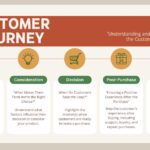Welcome to the dynamic universe of online commerce, where every click tells a story and every visitor is a potential customer.
In the bustling realm of e-commerce, one metric holds the key to unlocking the secrets of user engagement—Bounce Rate. This crucial indicator reveals the journey of visitors, highlighting the moments when they decide to linger and explore or swiftly exit your virtual store.
In this blog, we’ll unravel the mysteries of Bounce Rate in the context of e-commerce, understanding its impact on your digital storefront. What makes visitors bounce away, and more importantly, how can you turn those bounces into boundless opportunities?
Here’s what awaits you in this insightful journey:
Understanding Bounce Rate: Decode the essence of Bounce Rate and why it matters for your e-commerce success.
The User’s Perspective: Step into the shoes of your visitors to grasp why they decide to stay or leave in the blink of an eye.
Impact on Conversions: Explore the intricate dance between Bounce Rate and conversion rates, uncovering strategies to transform fleeting glances into committed transactions.
Optimizing User Experience: Learn actionable tips to enhance your e-commerce platform, ensuring visitors are not just passing through but actively engaging with your offerings.
Embark on this enlightening expedition, where we demystify Bounce Rate, turning it from a challenge into a strategic advantage for your thriving online store. Let’s redefine the e-commerce bounce, one insightful revelation at a time.
Table of Contents
ToggleWhat Is The Essence Of Bounce Rate, And Why Is It Crucial For The Success Of My E-Commerce Platform?

#1. First Impressions Matter:
Explanation: Bounce rate measures the percentage of visitors who leave your site after viewing just one page.
Suggestion: A high bounce rate may indicate that visitors aren’t finding what they expect, emphasizing the need for a compelling and relevant homepage.
#2. User Engagement Indicator:
Explanation: Bounce rate reflects user engagement levels.
Suggestion: Low engagement may signal a disconnect between your content and what users are seeking, highlighting the importance of aligning content with customer expectations.
#3. Content Relevance Check:
Explanation: High bounce rates suggest potential issues with content relevance.
Suggestion: Regularly audit and update product descriptions, ensuring they meet customer expectations and answer common queries.
#4. Page Loading Speed Impact:
Explanation: Slow-loading pages contribute to bounce rates.
Suggestion: Optimize page speed to enhance user experience, as quick access to information is crucial for retaining visitors.
#5. Mobile-Friendliness Matters:
Explanation: Non-responsive design can lead to higher bounce rates, especially on mobile devices.
Suggestion: Ensure your e-commerce platform is mobile-friendly, with easy navigation and responsive design.
#6. Clear Call-to-Actions (CTAs):
Explanation: Unclear or missing CTAs may result in bounce.
Suggestion: Place prominent and clear CTAs, guiding visitors seamlessly through the buying process and reducing friction.
#7. Trust and Security Concerns:
Explanation: Trust issues contribute to bounces.
Suggestion: Display trust badges, secure payment options, and clear privacy policies to instill confidence in users.
#8. Streamlined Checkout Process:
Explanation: A complex checkout process can lead to abandonment.
Suggestion: Simplify the buying journey, minimize form fields, and offer guest checkout options for a smoother experience.
#9. Responsive Customer Support:
Explanation: Lack of customer support options may lead to bounces.
Suggestion: Provide accessible customer support channels, such as live chat or contact forms, to address queries and concerns promptly.
#10. Regular Analytics Review:
Explanation: Regularly monitor bounce rate trends.
Suggestion: Use analytics tools to track bounce rates over time, identifying patterns and implementing improvements proactively.
In essence, bounce rate serves as a vital metric in gauging user satisfaction, content relevance, and overall site performance.
For your e-commerce platform’s success, it’s a compass guiding you toward enhancing user experience, optimizing content, and fostering a seamless journey that transforms visitors into satisfied customers.
How Can I Step Into The Shoes Of My Visitors To Comprehend Why They Decide To Stay Or Leave My Online Store So Quickly?

#1. Site Navigation Evaluation:
Explanation: Assess how easily visitors can navigate your site.
Suggestion: Pretend you’re a first-time visitor. Evaluate the intuitiveness of your navigation, ensuring that essential sections are easily accessible.
#2. Page Loading Speed Inspection:
Explanation: Experience the site’s loading speed as a user.
Suggestion: Test your site’s speed on various devices and connections. Optimize images and streamline elements for a swift and seamless experience.
#3. Content Relevance Check:
Explanation: Review product descriptions and overall content.
Suggestion: Ensure your content directly addresses customer needs and concerns. Eliminate jargon and provide information that aids purchasing decisions.
#4. Mobile User Simulation:
Explanation: Emulate a mobile user’s journey.
Suggestion: Test your site on different mobile devices, considering screen sizes and touch interactions. Optimize for a smooth mobile experience.
#5. Checkout Process Walkthrough:
Explanation: Go through the entire checkout process.
Suggestion: Identify any friction points in the checkout process. Simplify forms, offer guest checkouts, and ensure transparent pricing.
#6. CTA Effectiveness Assessment:
Explanation: Evaluate the visibility and clarity of CTAs.
Suggestion: Ensure CTAs stand out, guiding users seamlessly. Check if they convey the next steps clearly, minimizing confusion.
#7. Trust and Security Perspective:
Explanation: Consider trust elements from a user’s standpoint.
Suggestion: Display trust badges, secure payment options, and transparent policies to build trust and reassure visitors.
#8. Customer Support Interaction:
Explanation: Gauge accessibility of customer support.
Suggestion: Simulate common queries and test response times for customer support channels. Ensure users can easily find assistance when needed.
#9. Visual Appeal and Branding Assessment:
Explanation: Analyze the overall visual appeal and branding.
Suggestion: Check if your site conveys a cohesive brand image. Ensure visuals align with your brand identity and create a positive first impression.
#10. Feedback Solicitation Experience:
Explanation: Encourage and gather user feedback.
Suggestion: Implement easy-to-use feedback forms or surveys. Act on feedback to continually improve the user experience.
By actively engaging in this user-centric analysis, you’ll gain valuable insights into the factors influencing visitors’ decisions to stay or leave.
Regularly revisit this process to adapt to changing user expectations and ensure your online store remains a welcoming and conversion-friendly environment.
What Is The Relationship Between Bounce Rate And Conversion Rates, And What Strategies Can I Employ To Turn Fleeting Glances Into Committed Transactions?
Understanding the Relationship:
Bounce Rate vs. Conversion Rates:
Explanation: Bounce rate measures the percentage of visitors who leave your site after viewing only one page. Conversion rate, on the other hand, tracks the percentage of visitors completing a desired action.
Insight: A high bounce rate may indicate a lack of engagement, impacting conversion rates. Improving one often positively influences the other.
Strategies to Transform Glances into Transactions:
#1. Optimize Landing Pages:
Explanation: Landing pages are crucial for the first impression.
Strategy: Ensure clarity, relevance, and a compelling call-to-action (CTA) on landing pages to capture visitor interest and guide them toward conversion.
#2. Enhance Content Relevance:
Explanation: Visitors bounce when content doesn’t meet expectations.
Strategy: Tailor content to align with user intent, employing engaging visuals, concise copy, and persuasive storytelling.
#3. Improve Site Loading Speed:
Explanation: Slow sites frustrate and deter users.
Strategy: Optimize images, leverage browser caching, and invest in a reliable hosting solution to boost site speed, enhancing user experience and reducing bounce rates.
#4. Mobile Optimization:
Explanation: Mobile users expect seamless experiences.
Strategy: Prioritize mobile responsiveness, ensuring smooth navigation and a visually appealing layout across various devices.
#5. Strategic Use of CTAs:
Explanation: Weak or unclear CTAs contribute to high bounce rates.
Strategy: Craft compelling and strategically placed CTAs that guide users toward the desired actions, fostering engagement and conversions.
#6. A/B Testing for CTA Optimization:
Explanation: Determine the most effective CTAs through experimentation.
Strategy: Conduct A/B tests on different CTAs, analyzing user response and refining your approach based on data-driven insights.
#7. Build Trust with Trust Signals:
Explanation: Trust issues lead to quick exits.
Strategy: Display trust badges, highlight customer testimonials, and ensure a secure checkout process to instill confidence in visitors.
#8. Streamlined Checkout Process:
Explanation: Complex checkouts result in abandoned carts.
Strategy: Simplify the checkout process, minimize form fields, and offer guest checkouts to reduce friction and encourage completed transactions.
#9. Personalization for User Engagement:
Explanation: Generic experiences may not resonate.
Strategy: Leverage data for personalized recommendations, showcasing products or content tailored to individual preferences.
#10. Proactive Customer Support:
Explanation: Lack of support may lead to uncertainty.
Strategy: Provide accessible and responsive customer support channels, including chat, to address queries and concerns promptly.
Effortlessly navigating the dance between bounce rates and conversion rates requires a harmonious blend of user-focused strategies.
By optimizing key touchpoints, aligning content with user intent, and fostering a seamless user journey, you transform fleeting glances into committed transactions, creating a digital experience that not only captivates but converts.
What Actionable Tips Can I Learn To Enhance My E-Commerce Platform, Ensuring That Visitors Actively Engage With My Offerings Instead Of Just Passing Through?

#1. Clear Navigation:
Why: Ensure visitors easily find what they’re looking for.
How: Simplify menus, streamline product categories, and add a user-friendly search bar.
#2. Eye-Catching Visuals:
Why: Grab attention and showcase products effectively.
How: Use high-quality images, zoom features, and 360-degree views for a comprehensive product display.
#3. Persuasive Product Descriptions:
Why: Inform and entice potential buyers.
How: Craft concise, compelling descriptions highlighting key features and benefits.
#4. Responsive Design:
Why: Cater to users on different devices.
How: Ensure your website adapts seamlessly to smartphones, tablets, and desktops.
#5. Personalized Recommendations:
Why: Tailor suggestions to individual preferences.
How: Implement recommendation algorithms for related products or items frequently bought together.
#6. Streamlined Checkout Process:
Why: Simplify the path from cart to completion.
How: Minimize steps, offer guest checkout, and display a progress indicator.
#7. Proactive Customer Support:
Why: Address concerns in real-time.
How: Integrate live chat or chatbots for instant assistance throughout the user journey.
#8. Trust-Building Elements:
Why: Instill confidence in your brand.
How: Display trust badges, highlight secure payment options, and showcase customer testimonials.
#9. Social Proof Utilization:
Why: Leverage positive user experiences.
How: Integrate user-generated content, such as reviews and testimonials.
#10. Exclusive Promotions:
Why: Encourage immediate action with incentives.
How: Offer time-limited promotions, discounts, or exclusive deals.
#11. Optimize for Search Engines:
Why: Enhance visibility on search platforms.
How: Implement SEO best practices and optimize product pages.
#12. Email Marketing Engagement:
Why: Stay connected with customers.
How: Build an email list and send personalized product recommendations.
#13. Social Media Integration:
Why: Extend your reach through social channels.
How: Utilize platforms to showcase products and engage with your audience.
#14. Continuous Analytics Review:
Why: Understand user behavior and preferences.
How: Regularly analyze website analytics to identify trends and make data-driven improvements.
#15. Mobile Optimization:
Why: Prioritize mobile user experience.
How: Optimize for mobile devices, ensuring fast loading times and a user-friendly interface.
Transform your e-commerce platform by focusing on user experience, building trust, and staying adaptable.
These practical steps ensure sustained engagement and conversions, making your online store a user-friendly haven for shoppers.
Conclusion
In the vast landscape of online commerce, understanding the nuanced dance between bounce rates, conversions, and user engagement is paramount. Your e-commerce platform is more than a virtual store; it’s a dynamic space where every visitor interaction tells a tale.
As we demystify the bounce rate and unravel strategies to turn glances into committed transactions, remember the essence lies in user-centricity.
Step into your visitors’ shoes, optimize touchpoints, and foster trust through seamless experiences.
Embark on a journey of continuous improvement—where clear navigation, captivating visuals, and personalized engagement create an irresistible online haven. Your e-commerce success hinges on being adaptable, responsive, and, above all, human in your approach.
Let the rhythm of analytics guide your steps, ensuring your platform evolves into a thriving ecosystem where visitors don’t merely pass through but actively engage and convert.
In this ever-evolving digital realm, your e-commerce story is poised for boundless opportunities.







